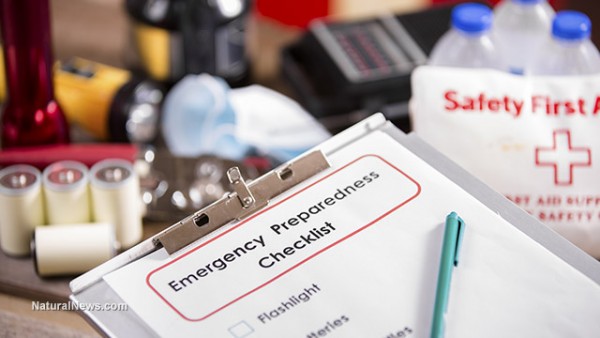
Advertisement
(Bugout.news) It should be fairly obvious to anyone familiar with the concept of prepping that it’sa sane and practical means of safe guarding against potential disaster. And although we live in a world rife with potential disasters — everything from superstorms and solar flares to grid failures and societal collapse — many people are still reluctant, for various reasons, to begin prepping for themselves.
Some are perhaps afraid of being seen as “survivalist wackos” by their peers. Others may think that prepping is a seriously expensive undertaking. The reality is that you can begin to do some effective prepping without turning your home into an armored bunker or spending wads of cash on expensive gadgets and foodstuffs.
A recent post by Pat Henry for The Prepper Journal introduced the idea of “prepping lite” for those who are ready to begin on a small scale. Henry explores some of the basic principles practiced by committed preppers and makes suggestions on how others can do the same on a smaller level.
Tips for small-scale prepping
Food
For the serious prepper, stockpiling can involve storing enough non-perishable food supplies to sustain a family for months, or even years. However, many emergency situations may only last a few days and it’s easy and inexpensive to prepare for a short-term disaster.
Start by stockpiling enough non-perishable food to last you and your family at least three days and slowly expand your supply. Canned foods are probably the easiest solution.

Water
Water is the most essential commodity of all. As with food, begin your water prepping by making sure you have enough to last your family for at least three days; each person needs roughly one gallon per day. It’s a good idea to purchase a water filtration system. One of the small ones will do, such as the Sawyer Mini Water Filtration System, but one with a larger capacity makes even more sense.
Henry also recommends obtaining a WaterBOB storage system, which fits in any bathtub and holds 100 gallons.
Heat
Even if you don’t have the space or money for a wood-burning stove or other heater that will work when the grid is down, you should be able to survive indoors even in severely cold weather if you have sleeping bags and extra layers of blankets on hand.
A good old-fashioned oil-burning hurricane lantern is a cheap and effective way to produce light while also generating a fair amount of heat during a power failure.
- Bug out or bug in, but either way you’ll need to eat – Click here
Health
Maintaining reasonably good physical shape is an important aspect of becoming prepared for a long-term disaster. A situation in which there are no longer creature comforts at the push of a button will no doubt involve physical demands. Basic survival activities such as chopping wood, hauling water and tending a garden require some stamina and strength.
But even those of us who are only interested in short-term prepping should consider doing as much as they can to improve their health. Walking, exercising at home, yoga and swimming are all ways to help keep one feeling healthy and ready for the unexpected.
Shelter
Few of us have access to an underground bunker or sustainable farm in the wilderness, but even in the city, it’s possible to improve or modify one’s space to make it more survival friendly.
For city dwellers, it’s also a good idea to have a destination in mind for when the SHTF. If your apartment or home seems insecure, find an alternative either within the city or nearby.
Firearms
Many preppers take their firearms very seriously. It’s not for everyone, but if you feel you need at least one firearm for protection, Henry recommends a 12 gauge shotgun.
The takeaway is that prepping need not be an all-consuming and costly undertaking. You can start small and quickly build up a food stockpile and other supplies to get you through at least a short-term emergency. Once you see how easy it is, you’ll likely want to continue your prepping activities.
Reporting by Daniel Barker, NaturalNews.com.
More:
- 6 prepping basics every beginner should know
- 15 uses for dental floss that will dramatically expand your survival abilities
- How to keep your bugout location secure
Bugout.news is part of the USA Features Media network. Check out our daily headlines here.
Submit a correction >>
Advertisement
Advertisements
















